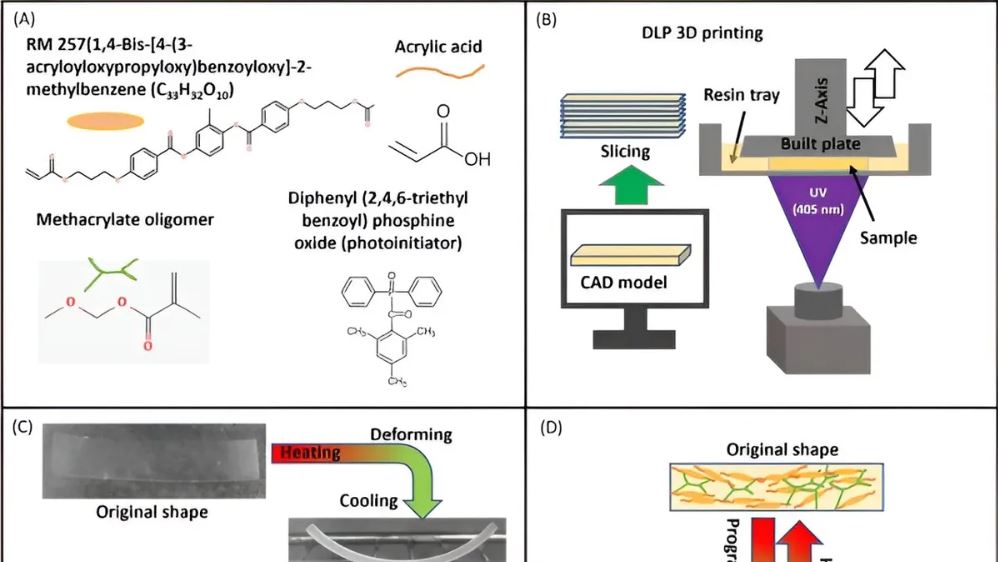In a significant stride for additive manufacturing, a research team at the King Abdullah University of Science and Technology in Saudi Arabia, led by Fahad Alam, has introduced an innovative method for 3D printing shape-memory polymer-based smart structures. This breakthrough leverages digital light processing (DLP), an advanced form of 3D printing that allows for the creation of entire layers in a single step, drastically accelerating the manufacturing process.
Merging Liquid Crystal with Resin
The researchers ingeniously integrated a liquid crystal material into the resin, thereby instilling thermoresponsive properties into the printed structures. This enables the structures to morph in response to temperature changes, eliminating the complexities traditionally associated with resin preparation. This rapid and straightforward method allows direct 3D printing of complex structures, presenting a significant advancement in the field.
Shape-memory Polymers: The Future of Smart Applications
Shape-memory polymers — materials that can mechanically deform and revert to their original shape when exposed to external stimuli such as heat, light, or electricity — underpin this research. The team explored the mechanical properties of these materials, demonstrating tunability through lattice structure design and finite element simulations. They also examined their potential in strain testing and joint movement sensing applications, recording changes in electrical resistance from the 3D printed smart patch to detect movement in artificial limb joints and arms of patients. With such a multitude of potential applications, these smart materials hold promise for regenerative medicine and myriad industries.
The Dawn of 4D Printing
This study, published in the journal NPG Asia Materials, not only heralds a significant step forward for 3D printing but also showcases the potential of 4D printing. Here, time becomes the fourth dimension, allowing for the creation of objects that evolve over time. The advent of 4D printing, coupled with the novel approach of incorporating shape-memory polymers, paves the way for innovations such as smart patches for joint movement sensing, smart tools, toys, and biomedical devices. The convergence of smart materials and additive manufacturing could usher in a new era of dynamic, responsive, and regenerative solutions.
Subscribe to AM Chronicle Newsletter to stay connected: https://bit.ly/3fBZ1mP
Follow us on LinkedIn: https://bit.ly/3IjhrFq
Visit for more interesting content on additive manufacturing: https://amchronicle.com


